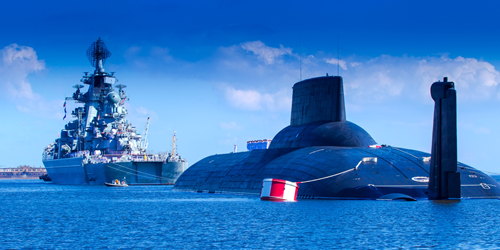Tracking Nuclear Material Aboard Submarines
Last year, the United Kingdom and the United States agreed to transfer some of their nuclear-powered submarines to Australia, a country that, at that time, possessed none. On hearing the announcement, Bernadette Cogswell and Patrick Huber of Virginia Tech in Blacksburg say that they were immediately concerned as there is currently no easy way to safeguard a nuclear reactor aboard a submarine. Now, the duo has come up with a technique that could solve that problem [1]. They say that the method could be used to confirm the presence of a submarine’s nuclear core without the need for onboard monitoring.
Most naval nuclear reactors employ uranium that is highly enriched fissile uranium-235 ( 235U), a material also used to make nuclear weapons. For land-based reactors, inspectors keep track of 235U using neutrino detectors placed close to an operating core (see Feature: Neutrino Detectors for National Security). But this technique doesn’t work for the water-submerged cores in submarines at sea. It also fails for the weak signals from powered-down cores, allowing operators to subvert checks of docked submarines.
Cogswell and Huber’s technique solves this issue. Even when turned off, nuclear reactors emit antineutrinos due to the decay of 235U fission by-products such as radioactive isotopes of cerium and ruthenium. Cogswell and Huber predict that these antineutrinos, which have lower energies than those emitted by an operating reactor, should be detectable using current technologies from a docked, submerged submarine.
Details that would determine the ease with which the technique could be implemented are classified, but Cogswell says the technology needed to build the detectors is all available. “The implementation issue is fundamentally more a political challenge than a technical one,” she says.
–Katherine Wright
Katherine Wright is the Deputy Editor of Physics Magazine.
References
- B. K. Cogswell and P. Huber, “Cerium ruthenium low-energy antineutrino measurements for safeguarding military naval reactors,” Phys. Rev. Lett. 128, 241803 (2022).




